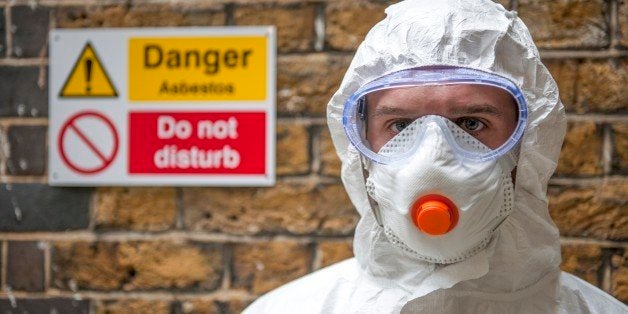
You've heard of New Year's health resolutions, but is your home making you sick? Doing your part to protect your home means reducing the exposure to toxins, pesticides, gases, mites and mold. For healthy living, these tips will help make you identify the hazards lurking in your environment and understand which of your health problems are in fact related to your environment.
Test Your Children for Lead Poisoning
Often a physician will order blood tests for young children who've been exposed to lead exposure as older homes built before 1978 in the United States contain lead paint, which causes lead poisoning. As pointed out in this article, there are no safe levels of lead exposure especially when they concern the health of young children.
If lead poisoning is a concern, you'll want to find an eco-friendly alternative to scraping the deterioration before applying a new coat of paint. Several brands of non-toxic, biodegradable products are available at chain stores. Thankfully, lead-based paints are not used anymore.
Reduce or Eliminate Mold Growth
Indoor molds can be a major health problem and mold testing can be expensive. Mold tends to grow in damp areas and if your home has a temperature range between 40°F and 100°F, you might want to do some research to find the best way to reduce or eliminate the growth of mold which often lives on damp or wet materials indoors such as cardboard, tiles, paper, paper products, upholstery and wallpapers.
Do Radon Testing
Home inspectors can do testing for radon, an odorless, invisible, radioactive gas that can increase the risk of lung cancer. The only way to know if you've been exposed is through testing, which is why it's important get your home tested especially for its impact on indoor air quality.
Identify and Remove Asbestos
Many homes that were built in the United States between 1920 and 1978 contained asbestos, which was commonly used as a building and insulation material. Intaking high levels can increase the risk of cancer and lung disease. Removing asbestos requires skill and expertise, but it is possible to identify it yourself. Contact the Environmental Protection Agency (EPA) to learn more.
Replace Household Chemicals
Some of the well-known household cleaning products are actually toxic and dangerous. Many of these can be replaced with eco-friendly products such as simple vinegar and water. Replace them altogether or better yet, get a microfiber cleaning cloth that doesn't require any chemicals.
Eliminate Combustion Gases
These toxic gases emit carbon monoxide, nitrogen oxides, and sulfur dioxide and are typically found in combustion appliances such as portable kerosene heaters. Prevent these gases from spreading by using an exhaust hood over a gas stove. Another recommendation is to install a carbon monoxide monitor.
Eliminate Water Pollution
Testing your water for pesticides, organic chemicals or radon may be a good idea depending on where you live. Water quality can be affected by a number of actors including nitrates and bacteria.
As you can see, it's possible to keep your home as healthy as possible even if we are at a higher risk for environmental-related conditions and illnesses than previous generations. Keep these environmental hazards at bay by preventing health problems.